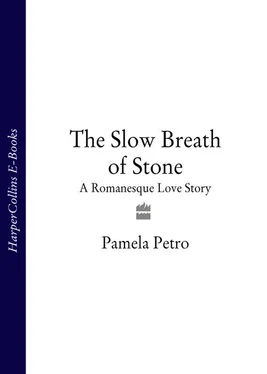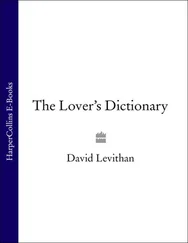Curt reflection was a trademark of Lucy’s journal writing, no matter what the subject. She recorded and commented; she didn’t dwell. A rare theme – Lucy was too eclectic to be repetitive – was that of her and Kingsley’s desire for privacy in an unrelentingly social environment. ‘I suppose a tea once in awhile brushes up one’s manners,’ she conceded.
About Paris Lucy avoided generalizations, preferring the sharp, focused observations of a photographer. ‘A thin whiteness over the city’; or, on walking past Notre-Dame in mid February: ‘It was closed but I studied the south portal. The frozen spray of ice from the mouth of each gargoyle showed which way the wind had blown on the first cold day. On my return home a warm shower of family letters.’
In March 1919 the Porters gratefully exchanged city for countryside (‘Glad to leave Paris,’ commented Lucy) so that Kingsley could begin researching Romanesque Sculpture of the Pilgrimage Roads in earnest. They would remain travelling, despite a few hiatuses, until Kingsley took up his post at Harvard in the autumn of 1921.
‘How many young dead we meet,’ wrote Lucy as they struck out east of the capital, ‘– always they are before us.’
I was equally glad to trade the congestion of Toulouse for the small towns of the Rouergue. The city’s wealth of sun-faded brick, with its southern promises of warmth, long naps, and lingering meals, was compromised by the edgy graphics of its thriving shops, not to mention its labyrinthine system of one-way streets. I was drawn to the shops, but my heart belonged to the brick’s promises, which no urban hub could ever keep. When I’m in the city I always long for the country; in the country the city never enters my mind.
Upon arrival in Toulouse I’d risen from the Capitale Métro station straight into a 200,000-strong student demonstration protesting against recent successes of the French far Right. Like a piece of foreign flotsam I’d been swept into the human tide, whereupon I immediately began marching, dragging my wheelie suitcase in an erratic path behind me. I was pleased to make a show against encroaching fascism, but the deep-throated chant of the crowd touched a nerve. That noise, like thunder, suggested a latent storm and made me fearful. Although the marchers remained calm – many leashed dogs participated – I’d been almost teary with relief to glimpse my hotel on a quiet side street.
I’d had a similar experience while visiting Toulouse’s great basilica, St Sernin (short for Saturninus), the largest Romanesque church in Europe, consecrated in 1096. The interior had been peaceful enough. Visiting in the 1880s, Henry James remarked: ‘What makes it so extraordinary is the seriousness of the interior … As a general thing, I favor little the fashion of attributing moral qualities to buildings; I shirk from talking about tender cornices and sincere campanili, but one feels that one can scarce get on without imputing some sort of morality to St. Sernin.’
He was right – James usually was – although the painted plaster walls that he, as well as Lucy and Kingsley, had seen have since been stripped down to masonry and pale brick. To my mind the dependability he attributed to the basilica (I felt it too) came from the fact that here brick and stone kept their promises of tranquillity and peace, as they could not in the surrounding streets. The long rhythms of the eleven-bay nave, barrel arched above, repeated the assurance of serenity.
In the time I’d slipped into St Sernin, however, early on a Saturday morning, and returned again to daylight, a massive ‘antiques’ market had gathered around the church, pressing in on it the way hungry children surround a tourist. The pilgrimage church’s quintet of radiating chapels, blooming in semi-circles at its eastern end, now radiated a makeshift architecture of their own: folding tables strewn with disorganized cast-offs, two aisles deep. This wide flounce of price-tagged junk actually extended all the way around the church.
‘Watch for pickpockets,’ shouted an elderly British tourist, inches from her husband’s ear. I took my rucksack off my back and wore it on my chest.
No one so much as glanced up at St Sernin; we were all hypnotized by the pretty rubbish of the century just passed. Mass-produced African sculptures; broken Portuguese pottery; detective paperbacks in French and English; used cassette tapes; a collection of doorknobs. There was even a white cast-iron kitchen sink. I had a friend who used to joke whenever he bought some bauble or other that he was part bower bird, a species inclined to build its nest out of glittery, shiny scraps. This was a bower bird’s dream-come-true.
I tried, but even with binoculars I couldn’t get close enough to the south portal to make out a capital of Adam and Eve’s expulsion; had I not carried Lucy’s photograph, I would never have glimpsed the pair’s rather proud demeanour – curious in the circumstances – caught in Lucy’s sunlit image, or their giant hands haughtily covering private parts.
After an African gentleman tried to buy my binoculars I gave up on the church and attempted to strike a bargain with one of the antique dealers over a copper kettle. From her journal I knew that Lucy had set off on a restorative walk in a city not too far from here, but instead had been lured into a shop selling copper utensils (‘ended by buying 21 articles for the kitchen’), so I was hoping for a nice convergence. But the woman wouldn’t budge.
The Musée Joseph Vaylet in Espalion, in the Rouergue, is St Sernin’s Saturday market enclosed, dusted, hushed, and (loosely) curated. I preferred it by far. It costs next to nothing to enter and is staffed by an elderly couple who take advantage of the time on their hands by shelling peas. Joseph Vaylet was a Rouergat worthy who fought in the First World War and lived until 1982. In the course of his long life he amassed a staggering collection of objects: a military horn used in the French army until 1840, the trumpet of which is shaped like a toothed serpent; a grape-picker’s basket designed to be worn on the head; a glass baby bottle with a glass nipple; gas masks from the Second World War, both military and civilian; a seventeenth-century gourd used for holding spirits; a photo from the Fête des Druides, 1937; a red sandstone sink; a bone from a plesiosaurus – the accompanying drawing shows a long-necked reptile like a brontosaurus, with fins – who lived on the causses for five million years, when they formed the bottom of the sea. None of these objects are for sale, of course, but it doesn’t take a great leap of the imagination to see a fine Saturday market in the making.
Based on sheer numbers, the museum shines in its assortment of ceramic holy-water vessels, but its chief prize is singular: an anthropomorphic menhir about waist-high, found locally and erected sometime between 3500–2200 BC. Statue-menhirs, which are essentially standing stones carved with human attributes, are rare, though the greatest concentration in Europe is in the Rouergue. Some sport schematic arms and legs, beards and breasts, even tattoos incised onto large, tooth-shaped stones; this one, however, was more enigmatic. Two deep eyeholes and a long, half-open mouth seemed to fix the viewer from a place far older than the Bronze Age. I couldn’t shake the feeling that it was an ancestral totem, a sire of all creatures with eyes and mouths before we differentiated into separate species. It was an eerie sight, like looking deeply into everything and nothing in particular at once.
When I visited the Musée Joseph Vaylet I had the place entirely to myself; the handful of other museum-goers in Espalion were all next door at the Musée du Scaphandre – the Diving Suit Museum. The unusual fact that a land-locked town like Espalion has a museum of the diving suit, advertised by a statue of a bronze diver in antediluvian gear standing in the middle of the River Lot and an orange diving bell on the pavement, is imperfectly explained by the fact that two local men were diving pioneers in the mid nineteenth century. I never made it there; I was too busy pondering M. Vaylet’s exhibits, the only common attribute of which seems to be their irrelevance to the present day.
Читать дальше












